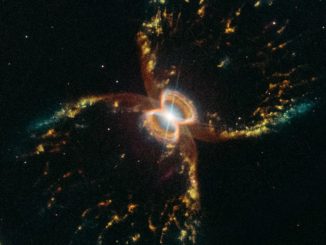In 1714, Edmund Halley marvelled at the now-famous globular cluster in Hercules – M13 – writing that “this is but a little Patch, but it shews it self to the naked Eye when the Sky is serene and the Moon absent.” Today, M13, located 25,000 light years away in the constellation Hercules, is considered one of the finest sights in the northern sky, a compact swarm of tightly packed stars visible in binoculars, small telescopes and, as Halley observed, to the unaided eye under a clear, dark sky. This view from the Hubble Space Telescope shows the cluster in all its glory, captured in images taken by the Advanced Camera for Surveys using red, blue and green filters.




